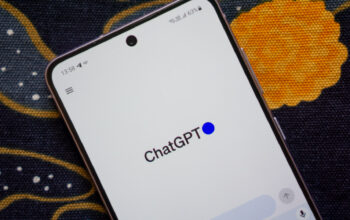Robert Triggs / Android Authority
Smartphone cameras have come a long way, and it’s pretty hard to come across a phone with a bad camera today. But my litmus test for a smartphone’s photography capabilities is to take it to a concert. Capturing frenetic movement on stage, lasers, darkness, and extremely dynamic lighting can stress even the best camera smartphones. It’s also an excellent way to gauge video capture, microphones, and zoom capabilities. However, in all my years of smartphone testing and concert-going, I’ve observed one common trend: no single phone excels at both photo and video capture.
No single phone excels at both photo and video capture.
Be it Samsung’s persistent shutter lag, the Pixel’s softer-than-the-competition video quality, or the iPhone’s low-light action photography struggles, I’ve yet to come across a phone that shines with both still photography and video capture when pushed to the limits. As a mobile photography enthusiast, going into 2024, all I want is a smartphone that truly excels at capturing both photographs and videos.
Are you content with the photo and video quality from your phone?
97 votes
Pixel 8 Pro vs iPhone 15 Pro Max: The camera conundrum
Recently, I took a Pixel 8 Pro and iPhone 15 Pro Max to an indie-pop concert. Nothing too extreme like my usual metal moshpits. But even in a more sedate setting, the gulf between the focus areas of the two smartphone brands was evident. For the sake of fairness, I shot multiple photos with both cameras and selected the best images for the comparison below. The differences are stark, to say the least.
It’s not a 1:1 shot, but the differences between the two phones are very apparent even in this relatively easy shot. The Pixel 8 Pro manages a brighter, sharper image that holds up very well to close scrutiny. The Pixel’s neutral color processing also shines through here, giving the image a natural look. On the flip side, while the iPhone’s image remains appealing, the noise levels and lack of sharpness become evident when you start pixel peeping or blowing up the image on a larger display. There’s noticeable noise suppression on the skin making it look almost plasticky in comparison.
The difference between the two phones becomes even more obvious in more challenging low-light conditions. Captured within a split moment of each other, these two pics show how the iPhone completely botched the shot while the Pixel 8 Pro managed a much more aesthetically pleasing image. The iPhone clearly opted for a crop from the primary sensor instead of sticking to the main telephoto lens, leading to a much softer image. Conversely, the Pixel nailed the white balance and used the telephoto lens to capture much more detail. Given my prior experience with Samsung phones, I’m confident it wouldn’t have fared very well here either because of its inherent shutter lag.
However, when it comes to video quality, the results are completely switched over. The iPhone runs circles around the Pixel 8 Pro with much sharper video and detailed captures. Video captured by the iPhone’s 5x telephoto lens is much more detailed and has more accurate colors. The silky smooth, jitter-free video capture stands out in particular, while the audio quality is markedly better, with deeper bass and clarity.
The Pixel 8 Pro’s videos tend to be lighter in contrast, brighter to a fault, and just a whole lot softer. I wouldn’t be ashamed to share the video on social media, of course, but compared to the iPhone, there is a stark difference in output. While I can put down some of those differences to stylistic choices and divergent color science, it’s hard to get past the excessive softness in a bid to reduce noise. The compressed sound adds to the lack of immersion when viewing the content again. Perhaps the video quality would’ve been better if I used the Pixel 8 Pro’s video boost feature, but it requires users to activate a specific mode and takes hours to process video — not a realistic solution even if I look past the fact that it is available on just a single phone.
There’s no one true camera flagship
Robert Triggs / Android Authority
These specific tests reinforce my point that the iPhone is clearly a video king, and the Pixel manages rock-solid photographs even in the most extreme settings. Moreover, these observations can easily be extrapolated to most Android smartphones. There is no one true camera flagship. With varying focus between still images and videography, your best bet is to double dip.
If you want the best photo and video quality, your only option is to double dip. That’s not feasible for most people.
Obviously, that’s not a feasible solution for most smartphone buyers. Nor should it be. With smartphone photography reaching a point where gains are relatively incremental, I hope smartphone manufacturers slow down on the gimmicks and, instead, focus on the things that matter — stellar photo and video quality across the board.


